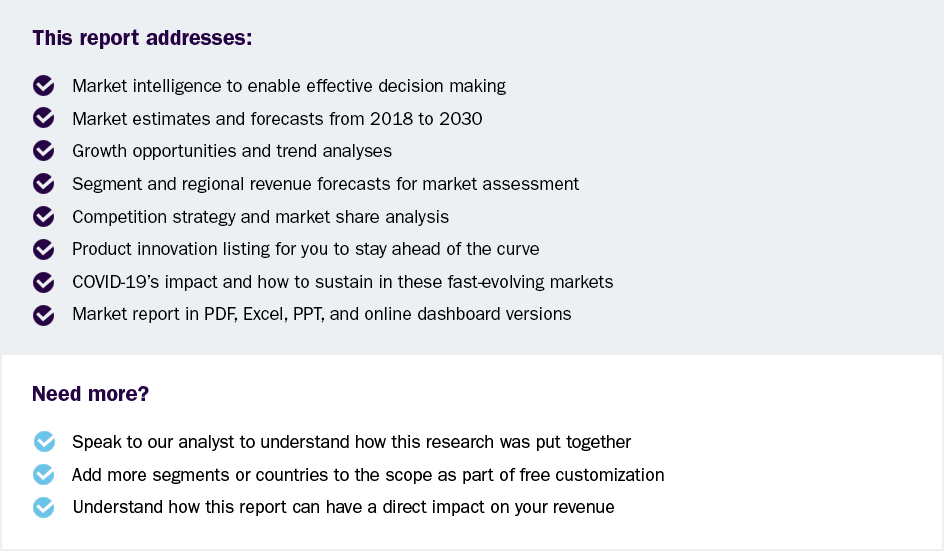Wheat Protein Market Size To Reach $9.28 Billion By 2030
Wheat Protein Market Growth & Trends
The global wheat protein market size is expected to reach USD 9.28 billion by 2030, expanding at a CAGR of 4.2% from 2024 to 2030, according to a new report by Grand View Research, Inc. Growing consumer preference for meat-free diets globally, and increasing product applications in various end-use industries, are the major factors driving the market growth. Furthermore, increasing cases of lactose intolerance have increased the demand for whey protein.
The demand for food products that promote better health, particularly those that are low in fat and cholesterol, high in protein, and useful for weight management, has increased owing to rising consumers' health awareness. The number of food products that contain plant-based protein has consequently increased significantly over the past few years. Furthermore, the increasing popularity of trends such as all-natural and clean-label products is anticipated to boost demand for wheat protein.
Wheat protein is widely used in the food and beverage industry, mainly in nutritional supplements, sports foods, dairy products, confectioneries, and baked goods, among other applications. Two insoluble protein groups that can be found in wheat protein are glutenin and gliadin. It is used in the manufacturing of noodles and bread as wheat protein permits a high level of dough strength by creating an elastic texture. The use of these products in the food and cosmetic industries is expected to increase due to changing consumer perceptions of wheat proteins and FDA approval for use in food products during the estimated period.
The small intestine is damaged by gluten intolerance or celiac disease, an autoimmune condition that prevents the body from absorbing nutrients from food. This harm is primarily a response to eating foods containing gluten, a form of wheat protein also found in barley, oats, and rye. However, some people may still feel uncomfortable in their stomachs even though they do not suffer from Celiac disease. This factor might limit market expansion in the coming years.
Europe is anticipated to grow at a substantial CAGR from 2022 to 2030 due to an increase in the consumption of healthy food products. France is experiencing stable growth on account of hectic work and changing lifestyles leading to increased consumption of functional food & beverages in the country. The regional growth can also be attributed to the rising demand for high-quality French bakery items. Baked product manufacturers in the region prefer wheat protein as an alternative to animal and dairy proteins while developing new products which will fuel product demand.
 Request a free sample copy or view report summary: Wheat Protein Market Report
Request a free sample copy or view report summary: Wheat Protein Market Report
Wheat Protein Market Report Highlights
-
Wheat gluten accounted for a share of over 45% of the global revenues in 2023. Wheat gluten has a wide range of functionalities, including texturing, viscoelasticity, foaming, binding, and emulsification which leads to its widespread use in bakery products.
-
The dry wheat protein market is experiencing growth driven by several factors. A rising awareness of plant-based diets and a demand for alternative protein sources contribute to the increased popularity of dry wheat protein.
-
Wheat protein is made up of protein ingredients extracted from wheat using various methods. The global wheat protein market is segmented into three concentrations: 75% protein, 80% protein, and 95% protein.
-
Bakery and confectionery accounted for a share of around 40% of the global revenues in 2023. The demand for wheat protein in bakery applications is being driven by factors like increased moisture content, improved water absorption, and softness of the finished product.
-
North America held a share of over 33% of the global market in 2023. This region's market share can be attributed to several factors, including growing consumer awareness of the health benefits of wheat protein, and the well-established food processing industry.
Wheat Protein Market Segmentation
Grand View Research has segmented the global wheat protein market report on the basis of product, application, concentration, form, and region:
Wheat Protein Product Outlook (Volume, Kilotons; Revenue, USD Million; 2018 - 2030)
-
Wheat Gluten
-
Wheat Protein Isolate
-
Textured Wheat Protein
-
Hydrolyzed Wheat Protein
-
Others
Wheat Protein Concentration Outlook (Volume, Kilotons; Revenue, USD Million; 2018 - 2030)
-
75% concentration
-
80% concentration
-
95% concentration
Wheat Protein Form Outlook (Volume, Kilotons; Revenue, USD Million; 2018 - 2030)
-
Dry
-
Liquid
Wheat Protein Application Outlook (Volume, Kilotons; Revenue, USD Million; 2018 - 2030)
-
Bakery & Confectionery
-
Animal Feed
-
Dairy
-
Personal Care
-
Sports & Nutrition
Wheat Protein Regional Outlook (Volume, Kilotons; Revenue, USD Million; 2018 - 2030)
-
North America
-
U.S.
-
Canada
-
Mexico
-
-
Europe
-
Germany
-
UK
-
Russia
-
Ukraine
-
Poland
-
France
-
Benelux
-
-
Asia Pacific
-
China
-
India
-
Japan
-
Australia
-
-
Central & South America
-
Brazil
-
Argentina
-
-
Middle East & Africa
-
Turkey
-
Egypt
-
List of Key Players of Wheat Protein Market
-
Archer Daniels Midland Company (ADM)
-
Agridient
-
MGP Ingredients
-
AB Amilina
-
Cargill Inc
-
Manildra Group
-
Crespel & Deiters GmbH and Co. KG
-
Kroener Staerke
-
Crop Energies AG
-
Roquette

